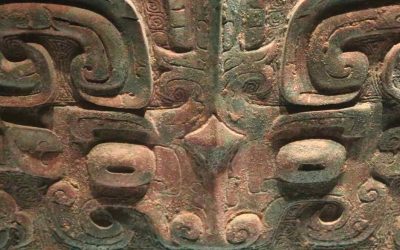The Real Situation of Women in the Qing Dynasty
Guo Songyi[1] has raised several important points about the situation of Chinese women during the Qing dynasty—points that could fundamentally reshape how both the public and academic researchers view this period. What follows is a brief summary of her observations.
First of all, in traditional society, the division between social classes and ranks was very strict. However, during the Qing dynasty, women among the common people participated in productive labor more than in any previous era. This work went beyond domestic duties—it became commodified and had market value. This change was closely linked to the development of the market economy, which encouraged rural sideline businesses and the cultivation of cash crops. Women took on the majority of work in industries such as sericulture, silk reeling, spinning and weaving, tea picking, and cloth production.
Moreover, women were not merely bystanders in field labor; this was evident both in the south and in the north. In the Jiangnan region, one woman engaged in spinning and weaving could support two or three people, and her income could equal or even exceed that of a man. As a result, the economic value of women’s labor became increasingly recognized.
Secondly, the Qing rulers upheld Zhu Xi’s Neo-Confucianism and strongly promoted the «Three Obediences and Four Virtues.» The number of women honored by the court for chastity or heroism surpassed one million—more than in any other dynasty. Many more women met the criteria but were never formally recognized. During times of war, women often chose death to preserve their chastity. Many local chronicles from the late Qing period record the names of women who died during “bandit disasters.”
Some scholars argue that the government’s emphasis on chastity was a reaction to growing social challenges to these ideals. While the state promoted female chastity, a significant number of widows—especially younger ones—chose to remarry. According to the author’s analysis of certain genealogical records, 58.33% of widows under the age of 30 remarried. Among bannermen under the three offices of the Shengjing Internal Affairs Department, roughly half of the widows under 30 also chose remarriage. In some regions, sayings like «few women remain chaste after their husbands die,» or «women often remarry,» reflect a social norm that contradicted official ideology. In rural areas and among lower-class city dwellers, life was relatively open. Men and women frequently interacted in fields, markets, and temple fairs.
Thirdly, many landless farmers had to leave their hometowns and migrate for work. In some regions, migrants accounted for up to 12.64% of the male population. Most were unmarried young men or husbands who left wives and children behind.
In the northeast and northwest, it was common for widows not to remarry but to openly live with other men. In some cases, when a husband was away for a long time, the wife might invite another man to live with her. In Heilongjiang, this was known as “Labangtao,” a practice similar to «recruiting a husband to support a husband,» «one wife, two husbands,» or “letting a pigeon go” found in southern Shaanxi and eastern Gansu.
Fourth, although the saying «a woman without talent is virtuous» was widespread during the Qing dynasty, literacy among women increased significantly, even beyond the middle and upper classes. Some poor families also wanted their daughters to be able to read and do basic arithmetic. In Jiangnan, a region known for its economic prosperity and rich cultural heritage, female literacy was especially common. Educated women who had some leisure time often took pride in their literary talents, writing poems or painting.
According to Shi’s own account, the number of female poets recorded in A Survey was only about one-tenth or one-twelfth of the actual number, suggesting that there may have been 7,000 to 8,000 female poets during the Qing dynasty.
Fifth, it is often said that women in the Qing dynasty were strictly confined by patriarchal rules and boudoir training, constrained by male authority and clan expectations. In reality, whether noblewomen or commoners, women found ways to relax and enjoy themselves. Many festivals and seasonal activities were either open to women or specifically targeted toward them. These included events like «walking away all diseases» during the Lantern Festival, «Daughter’s Day» on the seventh day of the seventh lunar month, and moon-worshipping activities on the fifteenth of the eighth month.
Even though the government issued repeated edicts discouraging women from going to the mountains to worship Buddha, pilgrimages and temple fairs flourished. These events were often justified with reasons such as “praying for children and blessings” or “curing illness and fulfilling vows,” gaining the support of husbands and families—so much so that authorities were powerless to stop them. Women often traveled in groups, even across provincial borders. Such trips became excellent opportunities for them to relieve stress and enjoy the outdoors. Women were present at nearly all opera performances in towns and villages. They were also the main audience for narrative performances like Tanci and Baojuan, often paying small fees to invite storytellers and gather in groups to listen during their leisure time.
Sixth, any account of women’s history in the Qing dynasty should also include the experiences of women from various ethnic minority groups.
The paper emphasizes that, while we must understand the dominant aspects of history, we should not overlook its contradictions. These contradictions—often hidden beneath rigid moral codes—created fissures in the extreme norms imposed on women. What we call “regional differences” were in fact shaped by varying political, economic, and cultural influences.
I believe these points are truly interesting, and most of them have been very little studied, even though, in some cases, the information was available—perhaps somewhat scattered—to both Chinese and foreign observers. Guo Songyi’s work should mark a new direction in the study of the social history of the Qing dynasty.
About me: I have spent 30 years in China, much of the time traveling and studying this country’s culture. My most popular research focuses on Chinese characters (Chinese Characters: An Easy Learning Method Based on Their Etymology and Evolution), Matriarchy in China (there is a book with this title), and minority cultures (The Naxi of Southwest China). In my travels, I have specialized in Yunnan, Tibet, the Silk Road, and other lesser-known places. Feel free to write to me if you’re planning a trip to China. The travel agency I collaborate with offers excellent service at an unbeatable price. You’ll find my email below.
Last posts
Buddhist Monks in Medieval China
Buddhist Monks in Medieval China That is the subject of John Kieschnick's book. The book analyzes the contents of the three collections of biographies of monks that became famous in medieval China, through them he tries to give us first a characterization of the...
Manual of Taoist Architecture
Manual of Taoist Architecture There are some illustrated books that produce in the reader a contradictory feeling, because the images that explain what the text is about are sometimes accompanied by an exposition of ideas that is too superficial. Therefore the reader...
How the presence of goddesses paves the way for female power
How the presence of goddesses paved the way for female power One of the theses of my book Matriarchy in China: mothers, goddesses, queens and shamans (Madrid, 2011) was to assert that the presence of goddesses with prominent roles in a culture could signal the past or...
Spirits possession in ancient China
Spirits possession in ancient China. I have just finished reading The Ancestors Are Drunk, a book by Jordan Paper. Perhaps one of the best books on the religion of China that can be found, because with every chapter, almost with every page, he opens new windows,...
Yan Lianke. The Four Books
Yan Lianke. The Four Books The Four Books refers to the famous Four Books of Confucius, the basis of Chinese thought for two millennia. And like those of Confucius, these by Yan Lianke could become a new model for understanding the glories and miseries of human...
What if China’s history had been precipitated by the eruption of a volcano in Greece?
What if China's history had been precipitated by the eruption of a volcano in Greece? Although in present times there is greater concern about global phenomena, it is not that they did not happen before. Some natural catastrophes in the past were so violent that they...










